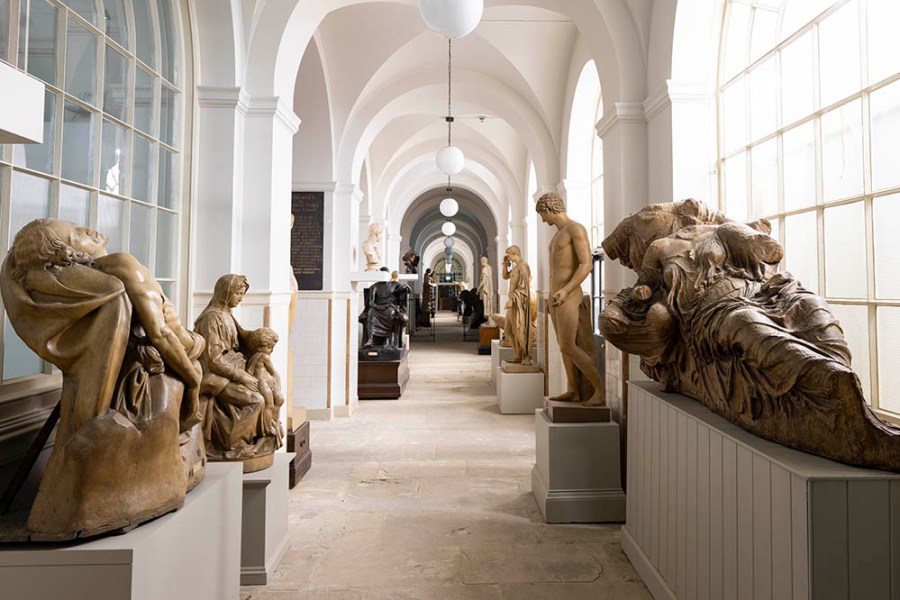Five minutes into my second pose, the universe begins to melt away. I feel connected with the Life Room, telepathically in touch with the artists assembled to draw, paint and sculpt me. Earlier we had walked along the Cast Corridor, a vaulted avenue lined with copies of Greco-Roman sculptures that leads to this space, the spiritual heart of the Royal Academy Schools.
Facing its two rows of raked benches and surrounded by statues of heroic figures from classical antiquity, I imagine all those who stood where I now stand, part of a centuries-old tradition. Where once my feelings of awe were moderated by disquiet – the hyper-idealised forms of nearby casts of the Farnese Hercules and Borghese Gladiator at odds with my own frame – a major refurbishment has since reinvigorated the room (now renamed the Dunard Fund Life Drawing Studio), complicating the ideals that previously defined it. The formation of the Royal Academy in 1768, after King George III gave permission to ‘establish a school or academy of design for the use of students in the arts’, was the conclusion of a period of uncertainty for British artists working in the shadow of the Italian Accademia di Belle Arti di Firenze and French Académie Royale de Peinture et de Sculpture.

Led by its first keeper, George Michael Moser, and first president Joshua Reynolds, the RA Schools adopted the academic traditions of fine art according to which drawing from life was the summum bonum : the highest good. As such, each it.
















